Light cars for special forces and not only
Before the start of the official program, the usual units of the American army are introduced to Polaris Defense MRZR cars of the ITV category
The market for combat vehicles internally transported is growing, as special operations forces and traditional units are looking for a greater range and better mobility on the modern battlefield. Let's see what is offered on it.
As modern battlefields are still characterized by a mixture of low-intensity and high-intensity conflicts, the international community of special operations forces develops tactical techniques, methods and methods of warfare, theories of combat use and technologies appropriate to hybrid warfare.
In October 2016, delegates from more than 20 countries from the Special Operations Force (MTR) community met at the Symposium in Vilnius, where representatives of the armed forces, industry and academia discussed the main role of the MTR in what was defined as “new generation military action”, and the rationale for major investments in them.
The term “military actions of the new generation”, first voiced by the Potomac Foundation, includes a non-military asymmetric type of collision in order to establish favorable socio-economic and political conditions in areas of operation where MTRs are tasked with destabilizing military opponents, conducting reconnaissance to facilitate the subsequent destruction of resistance by armed formations and in some cases, open intervention in the occupation of the territory and the suppression of the remnants of resistance.
Addressing delegates to the conference, Theres Assistant Secretary of Defense for Special Operations and Low-Intensity Conflict, Teresa Whalen, said that the SSOs continue to "look for ways to solve problems in productive ways, although there is a desire to take advantage of technological advantage."
High-tech solutions still remain in the foreground, while the MTR community is witnessing the intensive development of special operations vehicles capable of performing an ever-expanding range of tasks. The number of companies engaged in the design, development and deployment of vehicles transported internally, which in the West are classified as ITV (internally transportable vehicle), is growing rapidly. Machines of this category are able to be transported in the cargo compartments of airplanes and helicopters, which leads to an increase in the range of the SSO groups, and their capabilities regarding firepower, networking, mobility and protection are significantly increased.
Platforms in this category range from open-top (roof-removed) MRAP vehicles (with enhanced mine protection and improvised explosive devices) that were developed in the early 2000's to protect conventional and special forces from improvised explosive devices (IEDs) carrying out counterinsurgency operations and up to more maneuverable and lightweight variants still capable of satisfying the requirements for protection and firepower.
GDOTS
According to the head of light tactical machines at General Dynamics Ordnance and Tactical Systems (GDOTS), Sean Ridley, changeable and mixed combat missions are difficult to accomplish if you have one machine, especially when operational requirements differ in military branches and countries.
“This is not an easy task to fit into the profile of combat requirements, that is, to take one machine that can be reconfigured to fit other types of tasks without any major rework.”
“The market for light tactical vehicles will always have budget constraints, but there is still an inequality in all types of armed forces in the form of a typical light vehicle,” said Ridley, noting that the SSO units need a balanced solution between the lighter ITVs, for example, the family Polaris Defense's MRZR-2 and MRZR-4, and Joint Light Tactical Vehicle (JLTV), larger light tactical vehicles.
“Light tactical vehicles can move around the restricted-access zone and off-road with a significant load, and here we are very suitable with our vehicles. They are lightweight, powerful, with easily changeable configuration, capable of driving off the road and moving off-road without any problems. ”
GDOTS is in the middle of the initial 92 production of GMV1.1 ITV machines for the launch customer, the US Special Operations Command (USSOCOM). According to Ridley, by mid-October, 2016 had a total of 60 vehicles delivered to the Command, which would be deployed in various units, including special forces and sabotage and reconnaissance regiments, marine special forces, reconnaissance groups, and special forces of the Air Force.
In 2013, GDOTS signed a contract with USSOCOM worth 60 million dollars for approximately 1300 GMV1.1 machines with deliveries for 7 years. The contract provides for the supply of special forces of the US Armed Forces on 170 machines GMV1.1 annually, starting in January 2017.
Sources at USSOCOM reported that driver training and familiarization of personnel with vehicles, which are significantly different from existing HMMWV armored cars and other MRAP platforms, on which soldiers rode throughout the past decade, are being conducted in various advanced units.
“Planting the operator in a centrally driven machine provides higher levels of mobility and capabilities than those that were previously there,” said Ridley.
The basic configuration of the GMV1.1 platform includes armored and unarmored options with the ability to install 30-mm guns Мk44 Bushmaster from AlliantTechsystems, seats for three, four or seven people and a removable roof for weather protection. In addition, the air intake in the hood was modified to better cool the engine, protective arches to protect the crew, and the installation of weapons in terms of laying ammunition was improved.
The GMV1.1 car is based on the Flyer 72 Advanced Light Strike platform, its width is such that it allows you to transport the car in the cargo compartments of the CH-47 Chinook helicopter and the C-130 Hercules transport aircraft.
According to the company GDOTS, “GMV1.1 is a highly mobile platform with a payload capacity of more than 2268 kg with the possibility of 'arming' a minute after unloading from an aircraft and at the same time the most different armament is transported by car. An adaptable communication kit (not yet named, defined by USSOCOM) provides increased coverage and real-time operator access to important information. "
Industry sources were unable to confirm when GMV1.1 machines would be fully operational, although they would most likely be deployed in the Middle East and Southeast Asia at the end of 2017 and in 2018 to support military assistance operations conducted by the USSOCOM.
GDOTS is also in the process of obtaining approval by the US Government under the Sales Act weapons and military equipment to foreign countries for the supply of an unbreakable number of GMV1.1 platforms to the Italian MTR command.
It is understood that the units of the command of special operations of the army and Italian special forces fleet showed interest in these machines, which are going to be used in counterinsurgency operations. At the moment, Italian MTRs are involved in operations in the vicinity of the Libyan city of Sirte, where they conduct reconnaissance and information gathering.
In August 2016, the Italian government issued a law allowing MTR forces to deploy abroad without informing the country's parliament.
An industry source confirmed that the Italian SSOs will receive a GMV1.1 base machine without specialized USSOCOM kits, which include information control, communication systems and weapon systems.
Ridley said GDOTS is also positioning itself as a supplier of its platforms for other allied countries. “There are many issues to be resolved. Right now we are focused on fulfilling the order of our main customer at USSOCOM in order to make the platforms on time, deploy them and serve them if necessary. After that, we will deal with other customers, including foreign ones. ”
Meanwhile, the US Air Force SSO command also evaluates a small number of GDOTS Flyer 60 ITV vehicles, and Ridley said it is considering how to use ITV in a wider range of tasks. “They are in the middle of the process, and we support this work on expanding the ITV tasks and using it in other areas, and not just as a car transported in the cockpit of the V-22 tiltrotor. We evaluate them for other tasks and other purposes, ”he said.
GMV1.1 for USSOCOM is a variant of the Flyer 72 ITV car. The program has already begun its full-scale production.
Polaris
Polaris Defense is also a USSOCOM supplier, supplying the MRZR-2 and MRZR-4 vehicles for the second year under a five-year contract with an unspecified number. As the managing director of Polaris, Jed Leonard, said, the Command recently signed a contract for additional diesel versions of the MRZR-D4 under an additional agreement included in the original contract for the MRZR family of vehicles.
The MRZR-D4, presented at the MTR and Industry Conference in May 2016, is designed to reduce the logistical burden on the special teams operating without the support of advanced and operational bases. At the same time, a generator is installed on it to power the increased number of onboard consumers.
“We supplied MRZR-D vehicles to several customers, including the Marine Corps and USSOCOM. These vehicles will also receive the Canadian military at the end of the year, ”Leonard added.
In August 2016 of the year, it was announced that Canada had signed a contract for the purchase of the 36 MRZR-D4 ITV vehicles from Polaris Defense for its army, while the company is also considering an application from the Canadian SSO command for the supply of an ultralight combat vehicle, published in October of 2016.
Available in double (MRZR-2) and four-seater (MRZR-4) configurations, Polaris platforms can carry up to 680 kg of cargo at a maximum speed of 96 km / h. Platforms can accept various weapons installations and aids depending on the requirements of the combat mission; They can be transported in the cargo compartment of the convertible V-22 Osprey thanks to folding safety arcs.
“Polaris Defense also offers its ITV category its DAGOR (Deployable Advanced Ground Off-Road) vehicle, which has completed desert testing in the United Arab Emirates,” said Doug Malikowski, director of foreign economic relations. For example, formations in the Australian MTR Command, including special aviation the regiment and airborne reconnaissance regiments continue to test the DAGOR vehicle while local planning authorities are developing tactical techniques, methods and methods of warfare and principles of combat use.
DAGOR is designed to be transported inside, on a hanger, or delivered non-stop from helicopter platforms, including CH-47 and CH-53. The machine with a total weight of 3515 kg, including the payload capacity of 1474 kg, is capable of carrying up to five people and has a maximum power reserve of 805 km.
“Australia continues to test the DAGOR vehicle and is currently testing the MRZR-D,” added Malikowski.
According to the vice-president of Polaris Defense, the vehicle market for the SSO has flourished along with the operational space. He said that “Our cars have been very popular with MTRs in the last decade. We are considering the possibility of optimizing the modular platforms MRZR and DAGOR for combat missions. Our machines with an open and scalable architecture, not to mention payload and power, can adapt to medical tasks or evacuate the wounded, install various weapon systems or be equipped with reconnaissance, surveillance and information gathering systems. ”
SC Group
At the Defense Vehicle Dynamics Dynamics 2016 conference, the British company SC Group presented the latest ITV category platform: an extension kit to the 6x6 configuration for its Light Reconnaissance Vehicle (LRV 400) 4XXNNX light reconnaissance vehicle, which allows for increased payload, power reserve and mobility for the MTR units.
SC Group Commercial Director Jamie Clark said that when transforming the LRV 400 variant into the LRV 600 variant, an additional wheel axle and part of the hull are added, and all this takes several hours.
Such a modification increases the payload capacity from 1,5 tons of LRV 400 to 2,35 tons in LRV 600 configuration, while the width of the vehicle does not change and is 1,7 meters, which allows you to transport vehicles inside the CH-47 helicopter.
The technical characteristics of the LRV 600 are basically the same as those of the LRV 400, including the maximum speed of 160 km / h, the volume of the tank 80 liters, which allows you to have a cruising range of 800 km; the machine is able to overcome water obstacles to a depth of 0,75 meter.
The display of the LRV car at the conference immediately followed the selection of the NMT Extenda car by the SC Group for the program of the New Zealand special forces SOV-Mobility Heavy (SOV-MH). Deliveries of NMT 400 4х4 to New Zealand are expected to begin at the end of 2017.
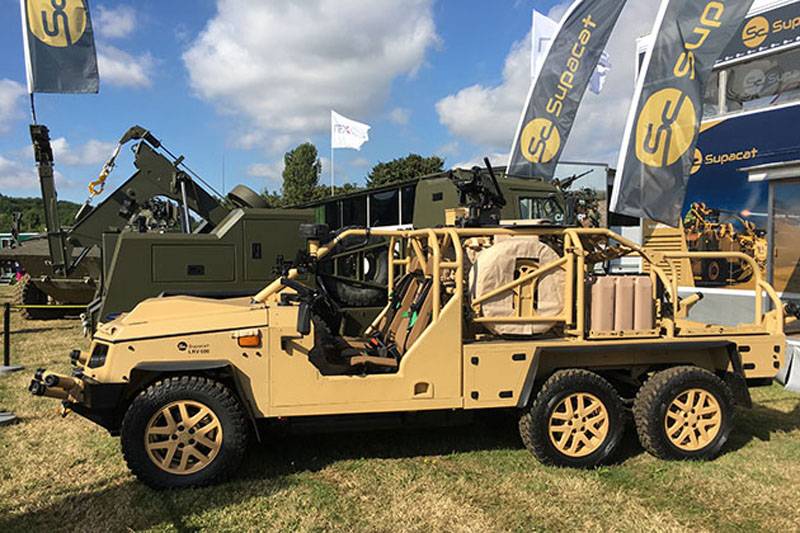
The newest member of the SC Group's special operations car family is the LRV 600 (6x6), which includes the extension kit for the LRV400 machines (4xXNNXX)
Renault Trucks Defense
As the French special forces continue to operate in the Middle East and Africa, they also need to get a new ITV vehicle, in which particular emphasis is placed on increased mobility, armament power and communication capabilities.
Sources at Renault Trucks Defense (RTD) said the company continues to design and develop a light vehicle for the special forces of the Light Special Forces Vehicle. RTD has already signed a contract with the French Office of Defense Procurement for the supply of 203 vehicles to the Heavy Special Forces Vehicle vehicles to the MTR Command, deliveries of which began in September of the 2016 year.
As part of the 250 million euro contract with RTD, signed on 443 machines for MTR in January, the company is developing an ITV variant that can be transported in the cargo cabins of airplanes and helicopters.
At Eurosatory in June 2016, the company RTD unveiled a large-scale model of the ITV car in 4x4 configuration, capable of carrying four soldiers and an armament installation. Some details are known at this stage of development, but industry sources report that special units will receive a vehicle with a loading capacity of two tons, a maximum power reserve of 800 km and a maximum speed of 110 km / h. Cars on existing plans will be delivered, starting with 2018 year.
Formations that will receive advanced technology in the form of a new car include the Marine Corps 1 and the 13 Airborne Regiment, which specialize in reconnaissance missions and rapid response tasks; as well as special command groups of the Navy.
French special forces are actively involved in the fight against the Islamic state (prohibited in the Russian Federation) and at the same time provide military assistance to many African countries with a special focus on training, consulting and assistance to the Democratic Republic of Congo, Mali and Cameroon, where the capabilities of ITV machines will significantly improve their mobility, fire power and range.
Jankel Group
The British company Jankel Group, which maintains close ties with the King Abdullah II Design and Development Bureau of the Jordanian Design Bureau, began shipping the first batch of Fox Rapid Reaction Vehicle cars to the Belgian SSO after signing the contract in 2016.
According to the company, the car Fox (or Al Thalab - Fox) is based on the chassis of the widely-used Toyota Land Cruiser, which gives operators a maximum payload of 1,4 tons. The vehicle can be transported inside the CH-47 helicopters and military transport aircraft A400M and C-130 and used for long-range reconnaissance, as well as direct invasion tasks when adding heavy weapons systems.
The Jankel Group does not comment on the contract, but a company spokesman said that the machine can “perform various tasks in order to offer the most efficient options for its value.”
According to the manufacturer, either a turbocharged diesel engine with a volume of 4,2 liters, or a petrol V6 with a volume of 4 liters, or 4,5-liter diesel engine V8 can be installed on a Fox car; maximum power reserve is 1200 km. Machines are manufactured in Jordan in close cooperation with KADDB. There were photos of Al Thalab cars from Syria, where partners in the NATO coalition use them in operations against the IG.
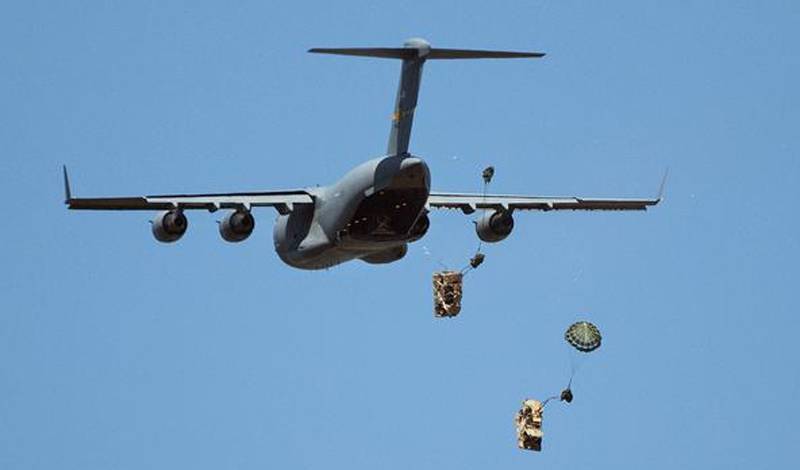
The ITV category cars are rapidly deployed from the cargo compartments of aircraft, which allows a significant expansion of the MTR and airborne forces.
Battelle
Battelle (a subsidiary of the Battel Memorial Institute) is preparing to supply for the USSOCOM its non-standard commercial vehicles NSCV (Non-Standard Commercial Vehicle) ITV category no contract worth 170 million dollars, issued in July 2016.
Under this program, it must deliver an unbreakable number of ITV machines, which are designed for more covert tasks, and which can also be transported inside various aircraft.
Battelle was unable to comment on the deal with USSOCOM, but the source said that the Toyota Land Cruiser 76, 78, 79 and 200 models, Toyota Hilux trucks and Ford Ranger trucks are in the process of being upgraded to armored and unarmored configurations. Machines will have various specially designed for SSO "improvements, including increased ballistic protection; optimized performance with improved suspension and brakes, as well as a reinforced frame and body; and integration of a set of operational management, reconnaissance, communications, detection and tracking systems, including infrared lighting and blackout. ”
These covert operations machines can perform a wide range of combat missions, such as special reconnaissance and military assistance, as well as close protection and evacuation operations for civilians.
In 2013, Battelle received a three-year contract from USSOCOM on the 300 of Toyota Land Cruiser and Hilux NSCV vehicles.
Battelle line of civilian vehicles
Traditional operators
The preemptive characteristics of the ITV category machines were positively evaluated outside the MTR community; these machines now consider conventional armed forces with significant needs, such as Canada and the United States.
A spokesperson for Polaris Defense said that recently “I realized that the market for our family of ultralight machines is growing, as more traditional forces place more emphasis on improved tactical mobility.”
In the United States, candidates for the Army Light Reconnaissance Vehicle LRV (Light Reconnaissance Vehicle) military program are still being considered and it is therefore clear that companies specializing in ITV technology, including GDOTS, Polaris Defense, Oshkosh, AM General and SC Group, are showing interest to this project.
“There is a huge interest in this project and everything connected with it,” said a representative of one of the interested companies, noting that the possibility of using JLTV machines as an interim solution to LRV is currently being reviewed again.
“We were excited to hear this,” said Ridley of GDOTS, adding that the army wants to have “a medium-sized truck that would meet its requirements for transportation inside and on suspension and be based on an existing program.”
But some industry experts, however, suggest that the request for proposals for LRV should not be expected earlier than 2020 of the year.
GDOTS’s LRV program includes a Flyer 72 with a 30-mm cannon, a six-seat ballistic protection kit. This option has already held several demonstration live firing at Fort Benning as part of the testing and evaluation program of the American army.
The interest of conventional forces in ITV concepts was also noted by General David Perkins, head of the Doctrine Development and Combat Training Directorate (TRADOC), who attended the Polaris Defense car show in October 2016.
“TRADOC was tasked with examining future conditions in order to determine the inequality of opportunities, analyze possible solutions and then determine needs. Our choice of Polaris is one of many that will help us better understand the paradigms of rapid technology development and the provision of comprehensive technical support, including a special focus on innovation and engaging in tasks corresponding to the next generation of hostilities, ”explained Perkins.
Platforms, including the Flyer 72 and DAGOR, are also considered as part of the American Army's GMV (Ground Mobility Vehicle) program, formerly called the Ultra Light Combat Vehicle (not to be confused with the GMV1.1 project).
“We were at the Industrial Day and will continue to monitor the development of the GMV program. The final request for proposals has not yet been published and we do not yet have an exact time frame, ”said the director of Polaris Defense. According to some sources, the request for proposals may be issued in the first half of 2017, with an application for a lightweight, nine-seat vehicle for infantry brigade tactical groups.
According to the army, “the machine must be able to quickly maneuver on the battlefield as a tool for the advance deployment of infantry units to counteract access denial strategies by using a variety of entry methods, including airborne assault, airborne landing and / or non-stop, in order to deliver combat components ".
USSOCOM continues to expand the fleet of ITV vehicles. At the same time, partners from NATO and non-NATO are likely to show increasing interest in these opportunities, especially when operators seek to maintain interaction with coalition partners.
As the operational space continues to shift from more traditional military campaigns towards the confusion of low and high intensity conflicts, we can expect an increase in these trends in the future.
Materials used:
www.shephardmedia.com
www.socom.mil
www.gd-ots.com
military.polaris.com
scgroup-global.com
www.renault-trucks-defense.com
www.jankel.com
www.battelle.org
www.wikipedia.org
en.wikipedia.org
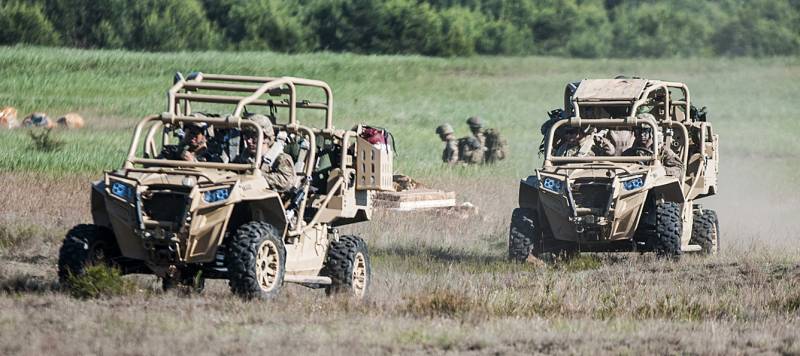
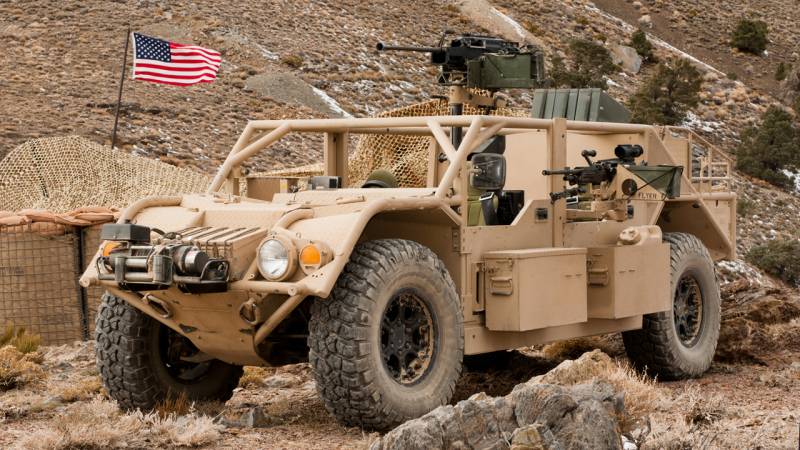
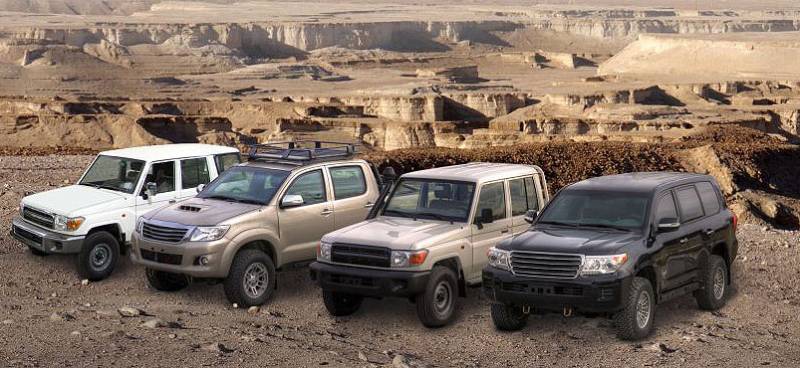
Information